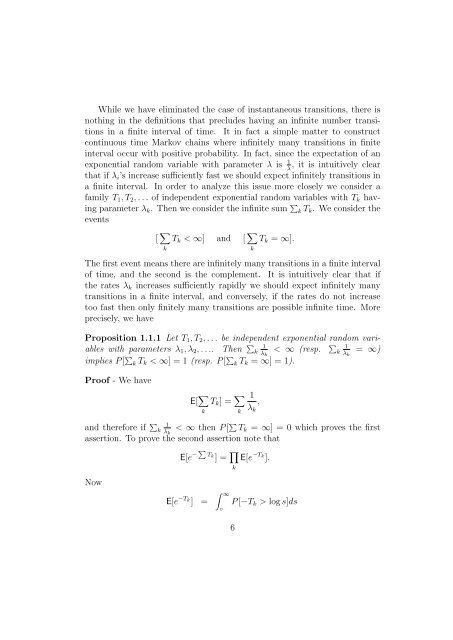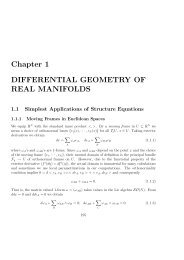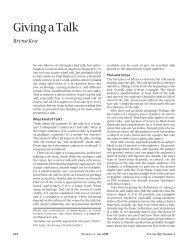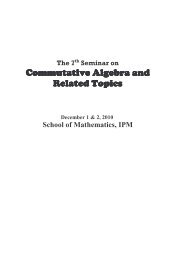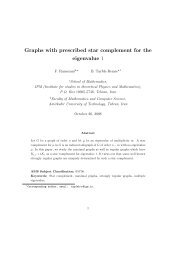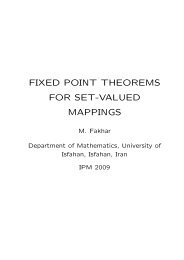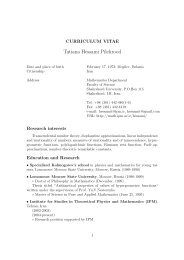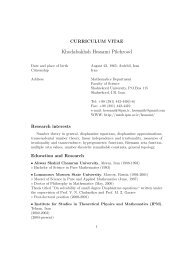1 Continuous Time Processes - IPM
1 Continuous Time Processes - IPM
1 Continuous Time Processes - IPM
Create successful ePaper yourself
Turn your PDF publications into a flip-book with our unique Google optimized e-Paper software.
While we have eliminated the case of instantaneous transitions, there is<br />
nothing in the definitions that precludes having an infinite number transitions<br />
in a finite interval of time. It in fact a simple matter to construct<br />
continuous time Markov chains where infinitely many transitions in finite<br />
interval occur with positive probability. In fact, since the expectation of an<br />
exponential random variable with parameter λ is 1 , it is intuitively clear<br />
λ<br />
that if λi’s increase sufficiently fast we should expect infinitely transitions in<br />
a finite interval. In order to analyze this issue more closely we consider a<br />
family T1, T2, . . . of independent exponential random variables with Tk having<br />
parameter λk. Then we consider the infinite sum <br />
k Tk. We consider the<br />
events<br />
[ <br />
Tk < ∞] and [ <br />
Tk = ∞].<br />
k<br />
The first event means there are infinitely many transitions in a finite interval<br />
of time, and the second is the complement. It is intuitively clear that if<br />
the rates λk increases sufficiently rapidly we should expect infinitely many<br />
transitions in a finite interval, and conversely, if the rates do not increase<br />
too fast then only finitely many transitions are possible infinite time. More<br />
precisely, we have<br />
Proposition 1.1.1 Let T1, T2, . . . be independent exponential random variables<br />
with parameters λ1, λ2, . . .. Then <br />
k 1<br />
<br />
< ∞ (resp. λk k 1 = ∞)<br />
λk<br />
implies P [ <br />
k Tk < ∞] = 1 (resp. P [ <br />
k Tk = ∞] = 1).<br />
Proof - We have<br />
E[ <br />
Tk] = 1<br />
,<br />
k<br />
and therefore if <br />
k 1<br />
λk < ∞ then P [ Tk = ∞] = 0 which proves the first<br />
assertion. To prove the second assertion note that<br />
Now<br />
k<br />
k<br />
λk<br />
E[e − <br />
Tk ] = E[e −Tk ].<br />
E[e −Tk ] =<br />
k<br />
∞<br />
P [−Tk > log s]ds<br />
◦<br />
6


